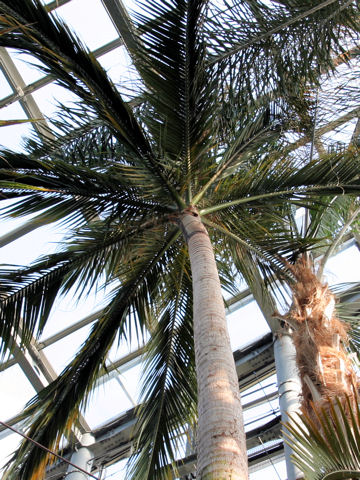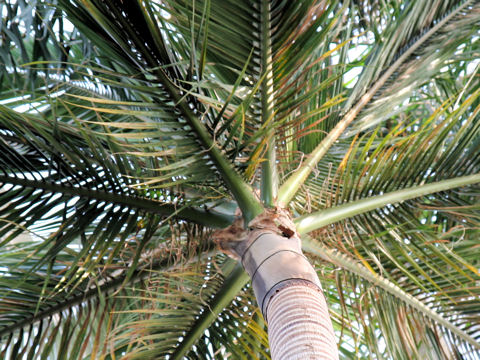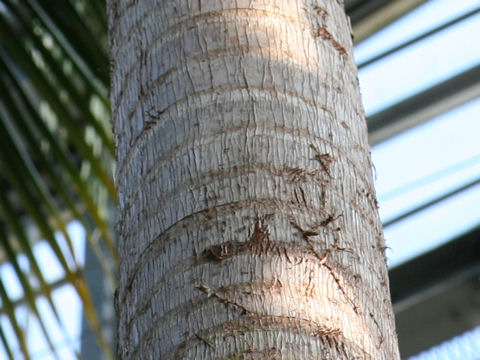 |






|

|
íªÌÎ_Ƽ\¾¯ÉªzµÄ¢Ü·Bê®êíÅAs̼aÍROZ`A³ÍQT[gÙÇÉÈèÜ·BtÍ·³T[gÌPHó¡tÅ·B©¶nÍÎ_ÌÎoxÌÓàÆÆA¼\̯§äÔAEuhiÔì¬æjÌR©µ©ÈAÌVRLO¨Éwè³êĢܷB
|

|
VÈG}V®ÌíÎØÅAw¼Í Satakentia liukiuensisBp¼Í èܹñB
|

|
"Yaeyama-yashi" (Satakentia liukiuensis) belongs to Arecaceae (the Palm family). It is a tall evergreen tree that is distributed only on Ishigaki Island and Iriomote Island in Japan. It is the sole species in the genus, and has a stem diameter of 30 cm and a height of about 25 m. The leaves are single-pinnate compound with a length of 5 m. There are only three places of origin, the foot of Mt. Omoto on Ishigaki Island, Hoshitate Utaki and Ubundol (Nakama River basin) on Iriomote Island, and it is designated as a national natural monument.
|

|
åãsß©æuçâ±ÌÔÙvÉÄA2006N1129úBeB
|




